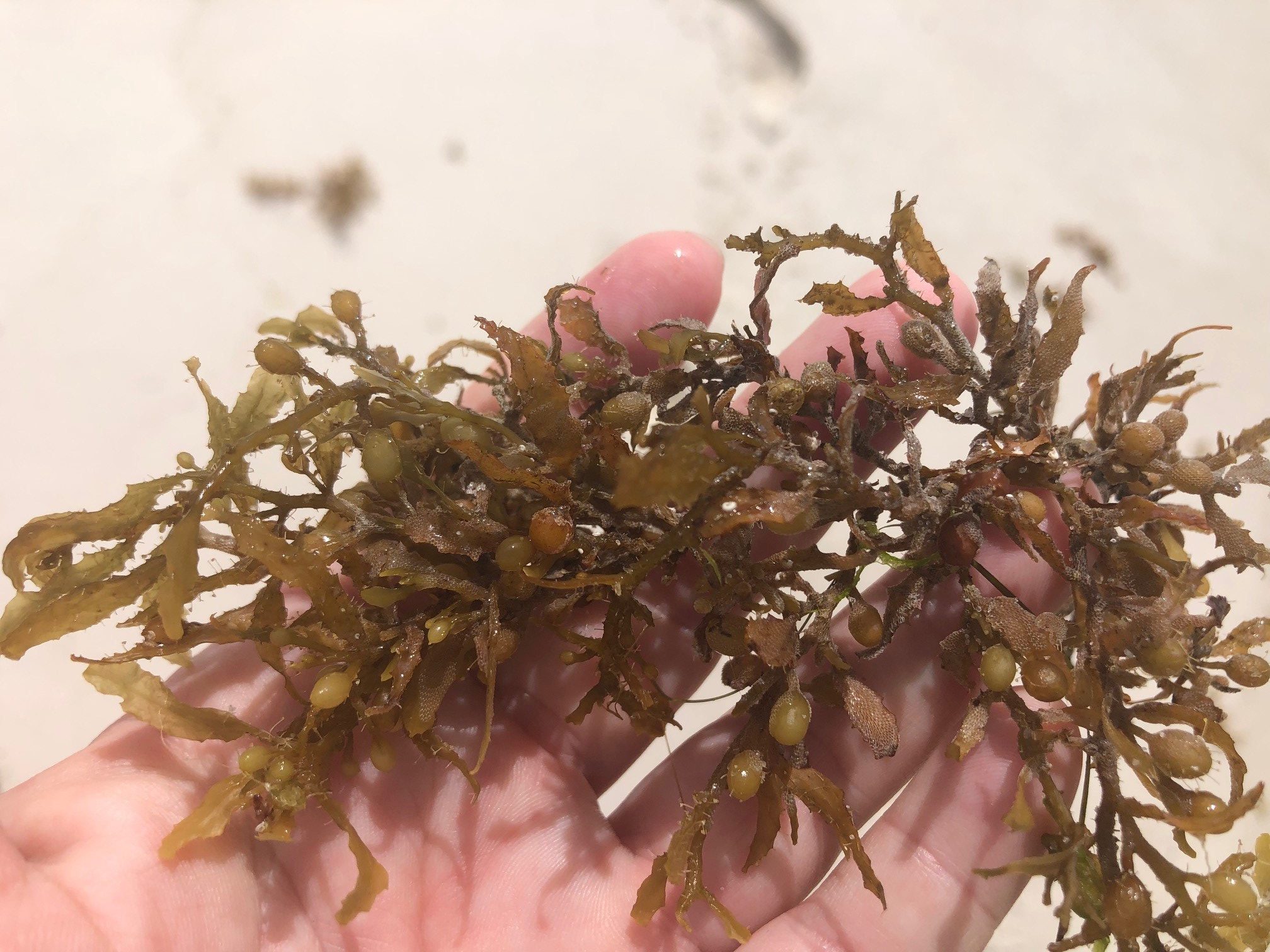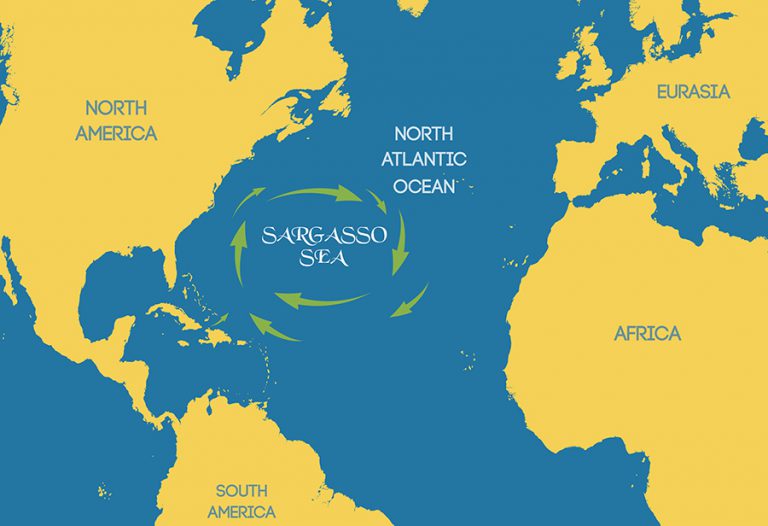It sounds like one of those Sci-Fi thrillers where there is a giant asteroid heading to Earth and we need a
special team led by Bruce Willis to save the planet. But in this case it is not a large rock, but a large mass of seaweed. And the threat is not a huge impact that would form tidal waves and atmospheric black out but large masses of seaweed covering the beaches up to a foot or more. Once on the beach, the mass of seaweed would begin to break down releasing odors and attracting insects that would not be popular with tourists – just as we get into the peak of tourist season around the state.

Photo: University of Florida
It is not something new, this has been a problem in south Florida for a few years now, but this year scientists can see the massive blob of seaweed heading this way and it is larger than before. They are expecting some beaches in Florida to be heavily impacted.
The seaweed in this floating mass is a brown algae known as Sargassum (Gulfweed). Like many brown algae’s, it is yellowish-brown in color and possesses small air bladders called pneumatocysts. These pneumatocysts allow large brown algae, like kelp, to stand tall like a tree in the water column – or, like Sargassum, to float on the surface where they can reach the much-needed sunlight.

There are two species of Sargassum that are found in the South Atlantic: Sargassum natans and S. fluitans. They are not easily distinguished so most just say “sargassum”. These seaweeds form large floating mats that drift in the ocean currents. The clockwise rotation of the North Atlantic gyre creates a central point around which the currents spin that is calm – similar to the eye of a hurricane. Here, the sargassum collects in large masses and was noted in the logs of Christopher Columbus as the “Sargasso Sea” – a place to avoid for colonial sailors due to the fact there is little wind or current here.

Image: University of Florida
Mats of this algae creates an ecosystem drifting across the sea housing transient and residential species that have been the study of marine biologists for decades. The seaweed will get caught in currents that bring it close to shore where fishermen seek it out fishing for jacks or mahi-mahi. Baby sea turtles will use it as refuge until they are large enough to return to the shores of the continents and islands. It will at times get caught in currents that bring it ashore where beach combers sift through to see what they can find. As we mentioned, once on dry ground the seaweed begins to die releasing the odors of decaying sea life and attracting an assortment of insects. When this happens coastal communities will use tractors to drag and remove the smelly mats and deposit them in the local landfill.
In recent years, in south Florida, the amount of this seaweed has increased. The seaweed has formed large mounds on the beaches making beach combing an ordeal and the smell unbearable in many communities. Some of the Sargassum finds its way into the canals of the Florida Keys where it sits and decays, decreasing dissolved oxygen and causing a decline in abundance of some local marine communities. They have responded by removing the Sargassum to the local landfill but are experimenting with composting the material for fertilizing other plants.
Several researchers have experimented with the composting idea with some encouraging results. Some have found a use for it as mulch for coastal mangrove shoots that have lost much of their natural fertilizers due to coastal urbanization. There are problems with using this in some plant settings. 1) It could be too salty for some landscape plants. 2) There is the concern of the amount of arsenic present. Studies continue.
The recent large masses of Sargassum coming ashore began in 2011. What is causing this recent increase in Sargassum on the beaches? Researchers are finding the source of this material is not mats rotating off of the Sargasso Sea but forming in the belt of moving water between the North Equatorial Current in the south Atlantic and the equator itself. The exact cause of this increase growth is uncertain but could be linked to an increase of nutrients from regional rivers, like the Amazon, and from increased ocean temperatures due to climate change – both of these are exactly what seaweeds like.
This year the mass of seaweed seen from satellites is particularly large – over 5,000 miles. It is drifting in the currents heading for the Caribbean and Florida. It will most likely impact south Florida, but researchers do not believe the impact will be as large along Florida panhandle beaches. They will continue to monitor and report on the movement of this mass of seaweed over the course of the summer.
 6
6
